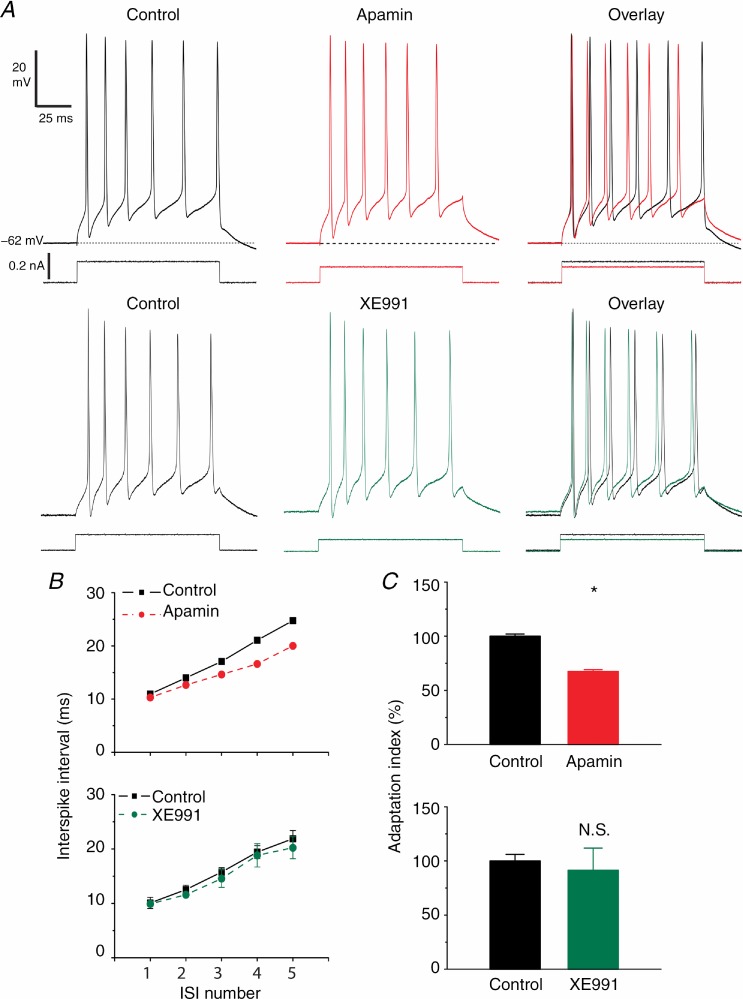Figure 8.
A, apamin (100 nm) reduced the early spike frequency adaptation at depolarized membrane potentials (–62 mV) in DGCs (top traces, red). 100 ms long depolarizing current pulses (see Methods) evoked bursts of six APs once every minute. The first to fifth ISIs were measured before and after apamin application. In order to obtain comparable responses with six APs, the current pulse amplitude was reduced to compensate for the increased excitability due to the mAHP blockade. However, XE991 (bottom traces, green) had little effect on early spike frequency adaptation. B, summary data of ISI duration in control conditions and after apamin (n = 8; top red plot) and XE991 (n = 5; bottom green plot) applications. Note the reduction in the third to fifth ISI duration after SK channel blockade. C, normalized adaptation index (defined as the slope of the line that fitted best to the plot of the first to fifth ISI, as shown in B) in control conditions (black) and after apamin (red) and XE991 (green) application. Apamin significantly reduced the adaptation index compared to control conditions (n = 8, P < 0.05 (*)), while XE991 had little effect (not significant; n = 5, P > 0.05).

